1.A Photograph
- Books Name
- (English) Hornbill & Snapshot Class-11
- Publication
- PathSet Publications
- Course
- CBSE Class 11
- Subject
- English
A photograph
by Shirely Toulsan
The poem deals with the shortness of human life pitched against the permanence of Nature. The speaker sees the photograph of her mother at a seaside holiday with her Two cousins. The mother is only twelve years old at the time and now she has been dead for twelve years. The finality of death makes the feeling of loss acute and there is a terrible silence, which speaks for itself.
A Photograph Poem Explanation
Line 1 – 4:
The cardboard shows me how it was
When the two girl cousins went paddling,
Each one holding one of my mother’s hand
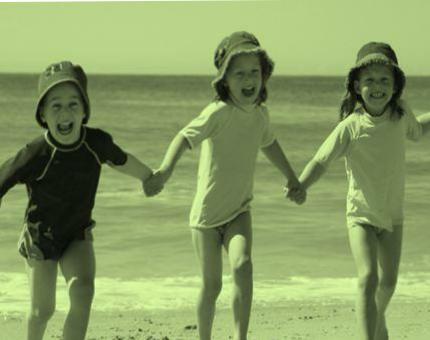
And she the big girl — some twelve years or so
Paddling – walking
In these lines, the poet is looking at an old photo album which is made up of cardboard. In the picture, there are three girls who are walking on the beach holding each other’s hands. The girl in the middle is the tallest and oldest, the other two girls on each side are younger than her. The girl in the middle is the poet’s mother. She is around twelve years old when the picture was taken.
Line 5 – 9:
All three stood still to smile through their hair
At the uncle with the camera. A sweet face,
My mother’s, that was before I was born.
And the sea, which appears to have changed less,
Washed their terribly transient feet
Transient – short-term; temporary

In the above lines, the poet describes how the photograph was taken. Her mother’s uncle took the photograph and told them to stop and pose. All three of them left their wet hair open and smiled at the camera. The poet’s attention is drawn towards his mother’s face which is described as a ‘sweet face’. The photograph was taken long before the poet was born. The poet calls their feet ‘terrible transient’ as they were so young by then and now they had grown older. On the other hand, the sea which touched their feet has changed less.
Line 10 – 13:
Some twenty-thirty — years later
She’d laugh at the snapshot.
“See Betty And Dolly,” she’d say, “and look how they
Dressed us for the beach.” The sea holiday
Snapshot – photograph
After twenty-thirty years later, she would laugh at the photograph. She would tell me to look at her cousins, Betty and Dolly and how their parents would dress all three of them up for the beach. They would have planned to take a photograph beforehand.
Line 14 – 15:
Was her past, mine is her laughter. Both wry
With the laboured ease of loss.
Wry – ironic; mocking
The poet recalls the sea holiday was her mother’s favourite moment from the past. While the poet’s favourite moment from the past was her mother’s laughter. Both the women would think about those past memories which they cannot live again. They tried their best to adjust to what they lost.
Line 16 – 19:
Now she’s been dead nearly as many years
As that girl lived. And of this circumstance
There is nothing to say at all.
Its silence silences.
Silences – a complete absence of sound
In the above lines, the poet says that her mother died twelve years ago, the same age her mother was in the photograph. Whenever the poet thinks of her mother’s death, she cannot explain what effect she has of her mother’s death. Death has silenced her mother which has also left her speechless.
A Photograph Literary Devices
Alliteration – repetition of a consonant sound at the beginning of two or more consecutive words. The instances of alliteration in the poem are as follows-
Stood still
Through their
My mother’s
Terribly transient
Silence silences
Oxymoron – a term which contradicts itself
Laboured ease
Epithet – a phrase expressing a quality of a person or something
Terribly transient
1.A Photograph
Poem-1
A Photograph
By Shirley Toulson
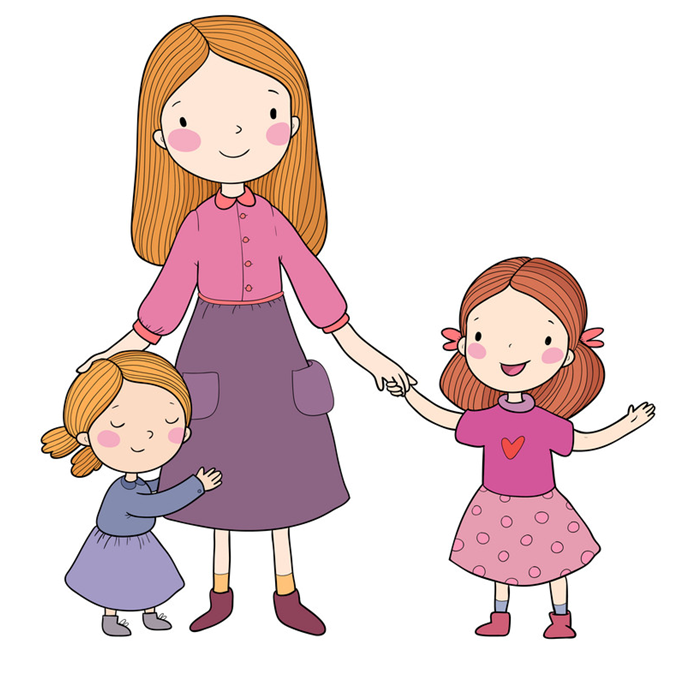
A Photograph Poem Introduction
Shirley Toulson wrote the poem 'A Photograph.' In this poem, she remembers her mother and her memories while looking at a childhood photograph of her mother when she was about twelve years old. She died twelve years ago, and she is unable to express her grief over her mother's death.
A Photograph Poem Summary
The poem pays tribute to the poet's mother. She is looking at an old photograph of her mother with a cardboard frame. The picture depicts three girls, the oldest and tallest of whom is in the middle. It's her mother when she was about twelve years old. Betty and Dolly, her two cousins on both sides, are holding her hands and are younger than her. On a beach vacation, they went paddling. The photograph was taken at that time by her uncle. The poet couldn't help but notice her mother's lovely expression. The sea touched her terribly transient feet, symbolising how she changed over time while the sea remained the same.
Her mother would laugh at the photograph after twenty-thirty years. She'd make the poet look at the photo and tell her how their parents would dress them for a beach vacation. Her mother's favourite past memory was a beach vacation, while the poet's favourite memory was her laugh. They both lost something they cherished and will never be able to relive that moment. Those moments were now only memories. Now, the poet's mother had been dead for twelve years, which was the same age she was when the photograph was taken. She is unable to express her grief over her mother's absence.
A Photograph poem Explanation
The cardboard shows me how it was
When the two girl cousins went paddling,
Each one holding one of my mother’s hands,
And she the big girl — some twelve years or so
- Paddling – walking
The poet is looking at an old photo album made of cardboard in these lines. Three girls are walking on the beach holding each other's hands in the photo. The girl in the centre is the tallest and oldest, while the two girls on either side are younger. The poet's mother is the girl in the middle. She was about twelve years old at the time the photograph was taken.
All three stood still to smile through their hair
At the uncle with the camera. A sweet face,
My mother’s, that was before I was born.
And the sea, which appears to have changed less,
Washed their terribly transient feet
- Transient – short-term; temporary
The poet describes how the photograph was taken in the preceding lines. Her mother's uncle took the picture and told them to stop and pose. They all smiled at the camera while leaving their wet hair open. The poet's gaze is drawn to his mother's face, which is described as having a "sweet face." The photo was taken many years before the poet was born. The poet refers to their feet as 'terrible transient' because they were so young at the time and had now grown older. The sea that touched their feet, on the other hand, has changed less.
Some twenty-thirty — years later
She’d laugh at the snapshot.
“See Betty And Dolly,” she’d say, “and look how they
Dressed us for the beach.” The sea holiday
- Snapshot – photograph
She would laugh at the photograph after twenty-thirty years. She would point to her cousins, Betty and Dolly, and how their parents would dress all three of them up for the beach. They would have planned beforehand to take a photograph.
Was her past, mine is her laughter. Both wry
With the laboured ease of loss.
- Wry – ironic; mocking
The poet recalls her mother's favourite memory from the past as a sea vacation. While the poet's favourite memory is of her mother's laughter. Both women would reflect on past memories that they would never be able to relive. They did their best to compensate for what they had lost.
Now she’s been dead nearly as many years
As that girl lived. And of this circumstance
There is nothing to say at all.
Its silence silences.
- Silences – a complete absence of sound
The poet states in the preceding lines that her mother died twelve years ago, the same age her mother was in the photograph. When the poet thinks of her mother's death, she is unable to explain the impact it has on her. Death has silenced her mother, leaving her speechless.
A Photograph poem Literary Devices
1. Alliteration – repetition of a consonant sound at the beginning of two or more consecutive words. The instances of alliteration in the poem are as follows-
Stood still
Through their
My mother’s
Terribly transient
Silence silences
2. Oxymoron – a term which contradicts itself
Laboured ease
3. Epithet – a phrase expressing a quality of a person or something
Terribly transient
About the Poet
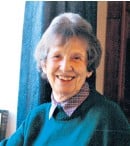
Kathleen Shirley Toulson ( Dixon; 20 May 1924 – 23 September 2018) was a writer, poet, journalist, and local politician from England. During WWII, Toulson attended Prior's Field School and served with the Auxiliary Territorial Service. In 1944, she married army lieutenant Norman Toulson; they divorced in 1951. She went on to study English at Birkbeck, University of London, and work at Foyles before becoming a journalist. She married poet Alan Brownjohn in 1960; they divorced in 1969.
2.The Laburnum Top
- Books Name
- (English) Hornbill & Snapshot Class-11
- Publication
- PathSet Publications
- Course
- CBSE Class 11
- Subject
- English
The laburnum top
By Ted Hughes
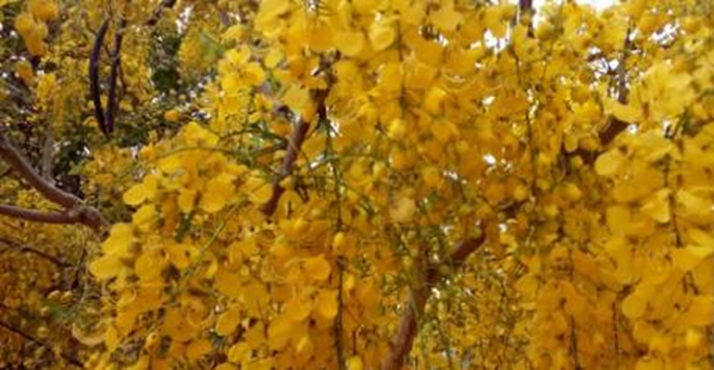
The Laburnum Top is silent, quite still
in the afternoon yellow September sunlight,
A few leaves yellowing, all its seeds fallen
Till the goldfinch comes, with a twitching chirrup
A suddeness, a startlement,at a branch end
Then sleek as a lizard, and alert and abrupt,
She enters the thickness,and a machine starts up
Of chitterings, and of tremor of wings,and trillings -
The whole tree trembles and thrills
It is the engine of her family.
She stokes it full, then flirts out to a branch-end
Showing her barred face identity mask
Then with eerie delicate whistle-chirrup whisperings
She launches away, towards the infinite
And the laburnum subsides to empty
Introduction : This poem “The laburnum top” is a beautiful poem by Ted Hughes. In this poem, the poet has used the laburnum tree and goldfinches as a symbol of life and its fluctuations. He describes the visiting of goldfinches on the laburnum tree and how she has made a nest on it. When the goldfinches have , it brings alive the tree as the chicks start to rustle and chirp. Hughes is trying to convey the message that the life is a process of exchange and transformation . People are alive because they undergo exchange of . The goldfinches transform the tree and make it alive coma without goldfinches and that chicks the laburnum is just another tree.
Line 1-3 : In the first stanza the poet says that he saw a laburnum tree with its yellow flowers. The tree is still and looks dead like in the day of September . Even the sunlight is also yellow. As it is the time of autumn the leaves of the tree have turned yellow and its seeds have fallen off it. The yellow colour symbolises beauty (because of flowers which have fallen off in the form of seeds, ( because of yellow leaves) as well as silence (day time without rain or wind) .In the whole stanza ,the poet is trying to describe the miserable condition of the laburnum tree which is silent , and without seeds.(useless)
Line 4-8 : the dead like me however changes as soon as the Goldfinch comes with a twitching chirrup. Goldfinch is a bright yellow coloured bird.
The poet uses similes comparing the bird’s movement to that of a lizard to describe the alertness and abrupt movements of the bird.
The poet uses onomatopoeia to bring the poem alive. In line 8,word like to drink and trillings are onomatopoeic words. He has also used the phrase “tremor of wings” to make the poem three dimensional by adding movements to it. The tree comes alive with all that is happening in it.
Line 9 -12: Now the whole tree trembles and thrill because of the mother bird and her young ones The poet probably wants us to feel how a dead like tree becomes alive because it has given space to the bird and her young one stop the birds have gotten shelter and the tree in return has got life
The Goldfinch is thus the engine of her family which includes the laburnum tree as well. According to the poet it fills the them with fuel i.e. It gives food to the young ones and thrill to the tree. Having done that, she against flies to a branch and non stop only had dark colours tried face is visible as it is yellow and hence becomes invisible in the yellow leaves of the tree.
Line 13- 15 : Reaching the branch-end of the tree, it makes strange but sweet chirping sounds and then begins his journey that is the sky and the laburnum tree again becomes silent and dead like.
2.The Laburnum Top
Poem-2
The Laburnum Top
By Ted Hughes
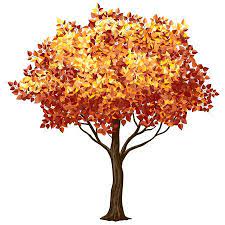
The Laburnum Top Poem Introduction
Ted Hughes wrote the poem 'The Laburnum Top.' It's about a mutually beneficial relationship between a Laburnum tree and a Goldfinch bird. The tree is yellow, silent, and death-like, but it is brought to life by the bird and her young. The yellow bird makes her home in a tree, where she feeds her young. However, as soon as the bird leaves to fly in the sky, the tree returns to silence and death-like.
The Laburnum Top Poem Summary
The poem begins with a description of a Laburnum tree with a still and silent top. Its leaves had turned yellow, and its seeds had fallen to the ground. It was a day in September, and the tree was motionless and deathly still.
The arrival of the Goldfinch bird brings life to the lifeless tree. She came to feed her younger children, who are perched on the branch's thicket. Her safe haven is the tree. With a chirping sound, she reaches the end of the branch. She then moves to the other side of the branch with a lizard-like speed and caution. Her young ones begin chirping like a machine, vibrating, and flapping their wings as soon as she arrives. The death-like tree comes to life, trembling and shaking.
She flies to the other side of the branch after feeding them. As she vanished behind the yellow leaves, her dark-colored face and yellow body were barely visible. She flew away in the sky, leaving the tree lifeless once more.
The Laburnum Top Poem Explanation
The Laburnum top is silent, quite still
In the afternoon yellow September sunlight,
A few leaves yellowing, all its seeds fallen.
- Laburnum – a short tree with hanging branches, yellow flowers, and poisonous seeds
In the preceding lines, the poet describes seeing a yellow-leaved Laburnum tree. In the month of September, the top of the tree is still and silent. It's autumn, and all of the tree's seeds have fallen. The poet used the word "yellow" to describe leaves and sunlight. Yellow is associated with silence, death, and beauty. With this colour, he describes the entire scene of the tree.
Till the goldfinch comes, with a twitching chirrup
A suddenness, a startlement, at a branch end.
Then sleek as a lizard, and alert, and abrupt,
She enters the thickness, and a machine starts up
Of chitterlings, and a tremor of wings, and trillings —
The whole tree trembles and thrills.
- Goldfinch – a small singing birds with yellow feathers on its wings
- Twitching – sudden jerk movement
- Chirrup – a bird making repeated high pitched sounds
- Startlement – feeling or showing sudden shock
- Abrupt – rapid
- Chitterings – to make a chattering sound
- Tremor of wings – involuntary vibration of the wings
- Trillings – to produce a chirruping sound
- Trembles – to shake
- Thrills – a sudden feeling of excitement
A Goldfinch bird appears and makes a sudden chirrup sound, bringing the tree's death-like scene to an end. The bird sits on the tree's branches, being as quick, alert, and cautious as a lizard. As she moved closer to the branch's thicket, her young ones began chirruping and making machine-like vibrations with their wings. The tree begins to shake and thrill as a result of the movement of the bird and her young. The tree has been depicted in two opposing scenarios by the poet. The tree was death-like and still at first, but then it gave life and shelter to the bird and her young ones.
It is the engine of her family.
She stokes it full, then flirts out to a branch-end
Showing her barred face identity mask
- Flirts out – lead on to
- Stokes – to add fuel to the engine
- Barred – stripy
Her family's engine is the Laburnum tree and the goldfinch bird. She feeds her young and moves to the opposite branch end. Her dark-colored striped face is visible because her body is yellow and she hides behind the tree's yellow leaves.
Then with eerie delicate whistle-chirrup whisperings
She launches away, towards the infinite
And the laburnum subsides to empty.
- Eerie – weird and strange
- Whistle-chirrup – gentle whisper like the chirping of the bird
- Subsides – diminishes
When the bird reaches the end of the branch, it makes a sweet chirping sound similar to whispering and flies away into the infinite sky. It renders the Laburnum tree silent and death-like once more.
The Laburnum Top Poem Literary Devices
1. Alliteration – repetition of a consonant sound at the beginning of two or more consecutive words. The instances of alliteration in the poem are as follows-
September sunlight
tree trembles
2. Simile – comparison between two things using like or as.
Sleek as a lizard
3. Metaphor – an indirect comparison between two things. Generally, a quality is compared.
“She enters the thickness, and a machine starts up” – the noise created by the movement of the birds is compared to the machine’s noise
“It is the engine of her family.”
“Showing her barred face identity mask”
4. Personification – the attribution of personal nature characteristics to something non-human
The whole tree trembles and thrills.
5. Transferred Epithet – the figure of speech where the adverb is transferred to another noun
her barred face identity mask
About the Poet
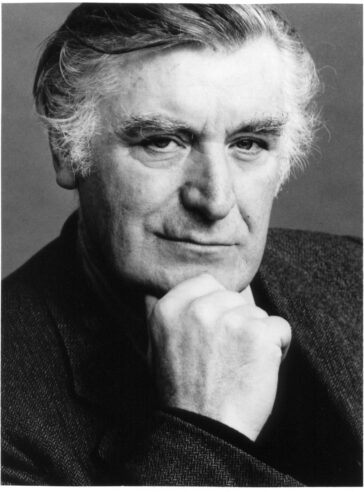
Ted Hughes, pen name of Edward J. Hughes, (born August 17, 1930 in Mytholmroyd, Yorkshire, England—died October 28, 1998 in London), English poet whose most distinctive verse is devoid of sentimentality, emphasising the cunning and savagery of animal life in harsh, sometimes disjunctive lines.
3.The voice of the Rain
- Books Name
- (English) Hornbill & Snapshot Class-11
- Publication
- PathSet Publications
- Course
- CBSE Class 11
- Subject
- English
The voice of the Rain
by Walt Whiteman
Introduction: The poem is a dialogue between the poet and the rain former vehicle in itself the Poem of Earth , it explains its lifecycle. Rising from the sea and the land in vaporous form, the raindrops fall back giving the world relief from drought and settling dust all over. It stimulates the dormant seeds to life and by soaking the earth once again it heads for a fresh lifecycle. A parallel is drawn between music and rain.
The voice of the rain
And who art thou? said I to the soft-falling shower,
Which, strange to tell, gave me an answer, as here translated:
I am the Poem of Earth, said the voice of the rain
Eternal I rise impalpable out of the land and the
bottomless sea,
Who art thou – Who are you
Eternal – never-ending
Impalpable – which cannot be described
Explanation:
In the above lines, the poet as the soft-falling Shower ‘who are you' ? to which the rain replied in a strange to state manner. The rain said that it was the Poem of the Earth and it is rose continuously from the land and bottomless ocean in the form of vapours.
Upward to heaven, whence, vaguely form’d, altogether changed, and yet the same,
I descend to lave the droughts, atomies, dust-layers of the globe,
And all that in them without me were seeds only, latent, unborn;
Whence – where
Vaguely – not clearly
Descend – come down
Lave – wash; bathe
Atomics – small particles
Latent – hidden/buried
Explanation
The rain tells the poet that it rises upwards towards the sky in the form of vapour where it changes its form (condenses into water droplets). It also says that although its form gets changed, it still remains the same.
The rain comes down to wash the drought and provide water. It also washes away the dust and small particles from the earth’s surface. And the seeds inside the earth grow into a plant because of the water provided by the rain. It gives life to the seeds.
And forever, by day and night, I give back life to my own origin,
And make pure and beautify it;
(For the song, issuing from its birth-place, after fulfillment, wandering
Reck’d or unreck’d, duly with love returns.)
Reck’d or unreck’d – it means whether cared for or not cared for. It doesn’t affect the rain nor the poet if someone listened to the rain or not.
Explanation
The rain says that by day and night it provides life, care, enrichment, and water to the place from where it originated. The rain keeps enhancing the beauty and purity of the earth by preparing a life-cycle for itself again.
(The Rain is like a song that originates from its birth-place, just like the heart of the singer, and travels to fulfil the earth’s needs and wanders. It finally comes back to the place from where it originated. Whether it is ruined or not, it returns to the original position, with a lot of love to its birth-place).
Poetic devices used in the poem
Personification: “And who art thou”? Although rain is non living thing yet the poet treats it like living thing.
Metaphor : ‘I am the poem of the Earth'
Imagery : ‘ soft-falling shower ’
3.The voice of the Rain
Poem-3
The Voice of the Rain
By Walt Whitman
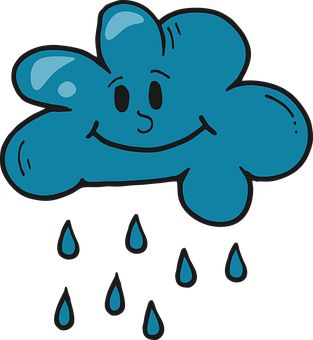
The Voice of the Rain Poem Introduction
It's a dialogue between the poet and the rain. To the poet, rain explains its eternal journey in its birthplace, i.e. earth. The poem The Voice of the Rain honours rain and the cyclical movement that it brings to the earth's various beings. The poet recalls his conversation with the falling rain in this section. "And who art thou?" he asks the rain, to which the rain responds that it is the poet of the Earth.
The Voice of the Rain Poem Summary
In the poem, the poet asks the soft-falling shower, "Who are you?" She responds, "I am the poem of earth." It's unusual for the rain to respond to the poet. The poet was told by the rain that she cannot be touched because she rises in the sky as water vapour from the land and the bottomless sea. It changes shape while remaining the same. Condensation transforms the vapour into clouds.
It returns to the earth's surface to provide water to drought-prone areas as well as to beautify and purify the earth (its birthplace). It gives life to the seeds inside the earth and aids in their growth. The rain doesn't care if anyone notices her actions or not; she finishes her work and returns home. The rain is also compared to a song by the poet because they both share a common journey. The song begins in the singer's heart, travels across the country to achieve the goal, and returns with due love for the singer (its originator).
The Voice of the Rain Poem Explanation
And who art thou? said I to the soft-falling shower,
Which, strange to tell, gave me an answer, as here translated:
I am the Poem of Earth, said the voice of the rain
Eternal I rise impalpable out of the land and the
bottomless sea,
- Who art thou – Who are you
- Eternal – never-ending
- Impalpable – which cannot be described
The poet asked the soft-falling shower, 'Who are you?' in the preceding lines. 'To which the rain responded in an odd to state manner. The rain stated that it was the Earth's Poem, and it rose continuously in the form of vapours from the land and bottomless ocean.
Upward to heaven, whence, vaguely form’d, altogether changed, and yet the same,
I descend to lave the droughts, atomies, dust-layers of the globe,
And all that in them without me were seeds only, latent, unborn;
- Whence – where
- Vaguely – not clearly
- Descend – come down
- Lave – wash; bathe
- Atomics – small particles
- Latent – hidden/buried
The rain tells the poet that it rises in the form of vapour towards the sky, where it changes its form (condenses into water droplets). It also states that even if its form changes, it remains the same. Rain falls to wash away the drought and provide water. It also cleans the earth's surface of dust and small particles. Because of the water provided by the rain, the seeds inside the earth grow into a plant. It gives the seeds a life.
And forever, by day and night, I give back life to my own origin,
And make pure and beautify it;
(For the song, issuing from its birth-place, after fulfillment, wandering
Reck’d or unreck’d, duly with love returns.)
- Reck’d or unreck’d – it means whether cared for or not cared for. It doesn’t affect the rain nor the poet if someone listened to the rain or not.
The rain says that it brings life, care, enrichment, and water to the area from which it originated, both during the day and at night. The rain continues to enhance the beauty and purity of the earth by preparing a new life-cycle for itself. (The Rain is like a song that begins in its birthplace, just like the singer's heart, and travels to meet the needs of the earth and wanders. It eventually returns to the point where it began. Whether ruined or not, it returns to its original position, with great affection for its birthplace).
The Voice of the Rain Poem Literary Devices
1. Personification – the poet used a non-living thing as a living thing in the poet
I am the Poem of Earth, said the voice of the rain
2. Metaphor – an indirect comparison between the qualities of different things
I am the Poem of Earth – rain is being compared to a poem
3. Hyperbole – exaggerated statements
Bottomless sea
4. Imagery – visual description of something
Soft-falling shower
About the Poet
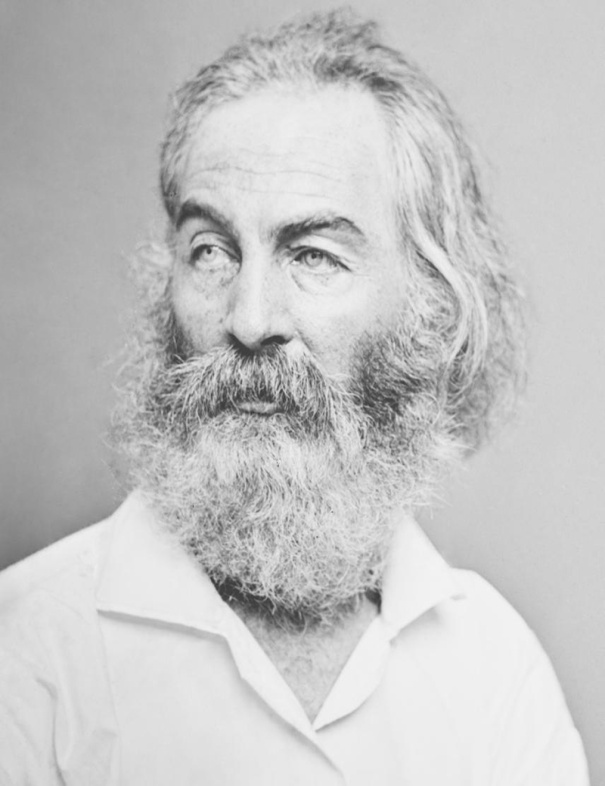
Walt Whitman, full name Walter Whitman, (born May 31, 1819, West Hills, Long Island, New York, U.S.—died March 26, 1892, Camden, New Jersey), American poet, journalist, and essayist whose verse collection Leaves of Grass, first published in 1855, is regarded as a historic moment in American literature.
4.Childhood
- Books Name
- (English) Hornbill & Snapshot Class-11
- Publication
- PathSet Publications
- Course
- CBSE Class 11
- Subject
- English
Childhood
by Markus Natten
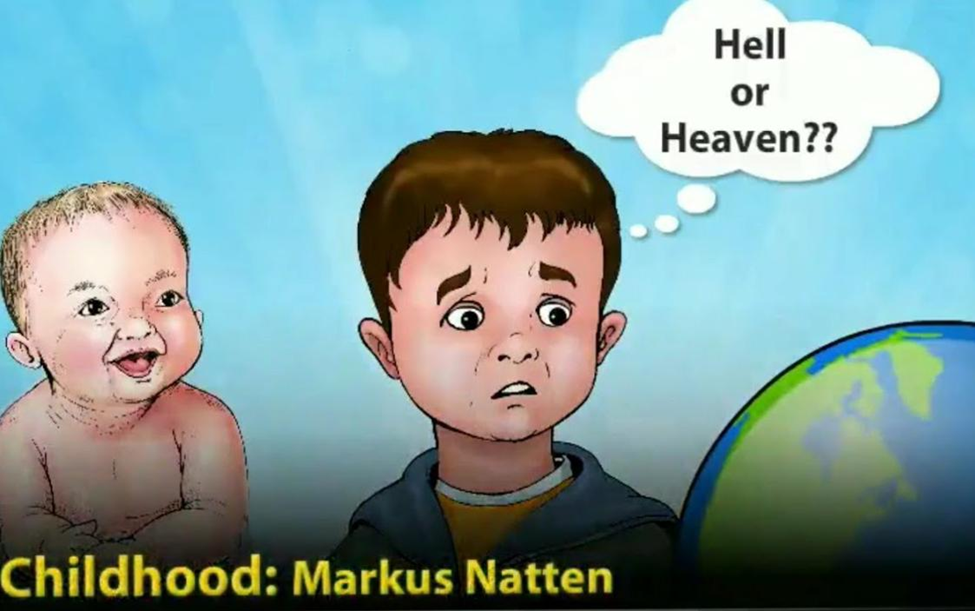
Introduction: The poem childhood deals with the poet's curiosity to know when actually and individual ceases to be a child. He wonders whether it is the age of the stage when the young, unsullied mind learns to see through the adult ‘hypocrisy and identifies his own distinctiveness. Childhood disappears to hide itself in an infant's innocent expression.
Stanza 1
When did my childhood go?
Was it the day I ceased to be eleven.
Was it the time I realised that Hell and Heaven,
Could not be found in Geography,
And therefore could not be,
Was that the day!
Explanation: The poet wonders when did his childhood go away from him. He wonders whether it went away when he crossed the age of 11 or when he realised that Hell and Heaven are imaginary and are not found in Geography (i.e. real world).He starts thinking perhaps the day when he gained his rational and logical thinking, he lost his childhood.
In this stanza, the poet has two different things which would have led to the lost of his childhood. The first is his growing up and the second his rationality. So, the poet neither likes to grow up nor rational thinking. He seems to be a lover of imaginations (Hell and Heaven). He desires to have the same beliefs which he had during his childhood.
Stanza 2
When did my childhood go?
Was it the time I realised that adults were not
All they seemed to be,
They talked of love and preached of love,
But did not act so lovingly,
Was that the day!
Explanation: In the second stanza, the poet again raises rhetorical question. He wonders whether he lost his childhood when he realised that adults are not what they seem to be. They talk and preach about love but their actions do not seem to be out of love. They are hypocrites and have hate in their actions.
Saying that, the poet thinks whether that was the day when he lost is childhood i.e. after realising the hypocrisy of the adults.
Stanza 3
When did my childhood go?
Was it when I found my mind was really mine,
To use whichever way I choose,
Producing thoughts that were not those of other people
But my own and mine alone
Was that the day!
Explanation: In the third stanza, the poet again raises a rhetorical question. He wonders whether he lost his childhood when he realised that his mind was really his own i.e. he could think independently and use it the way he desired.
The day when he realised that that he could produce his own thoughts and opinion and needed not to depend on the opinions of other people. Saying that, the poet thinks whether that was the day when he lost is childhood i.e. after realising the hypocrisy of the adults.
In this stanza, the poet is probably referring to his past experiences which are not very good. Perhaps he was earlier affected by what people would say. However when he grew up, he realised that other people cannot form his opinions. His mind is his own and he can think on his own.
Stanza 4
Where did my childhood go?
It went to some forgotten place,
That is hidden in an infant’s face,
That’s all I know.
Explanation : In the final stanza, the poet again wonders where has his childhood gone. Perhaps it went to a place which is forgotten. Finally the poet says that he can see his childhood and innocence hidden in the face of an infant child and that is the only place where it is found. In the final stanza, the poet seems to be a little bit relieved because he can finally see his childhood and innocence.
4.Childhood
Poem-4
Childhood
By Markus Natten

Childhood Poem Introduction
Marcus Natten is the author of Childhood. The poet reflects on his lost childhood in this poem. He reflects on the moment when he lost his innocence and realised that the world was not what he thought it was. He recalls a time when his thoughts changed and he became aware of the hypocrisy of those around him. He eventually came to terms with the idea that his childhood had vanished and was now hidden in the face of a innocent infant.
Childhood Poem Summary
The poet wonders in the poem when he lost his childhood and innocence. He became aware that he no longer sees the world as he once did, and he can recognise hypocrisy in others. He recalled numerous occasions in his life when he could have lost his childhood. He wondered if it was the day he stopped being eleven, or if he realised Hell and Heaven didn't exist in this world and couldn't be found in the geography.
Next, he discusses the possibility that he realised adults are not what they appear to be and are hypocrites. They talk and preach about love, but their actions don't reflect that. Was it the day he realised his mind was his own and capable of thinking for himself? Nobody could own that, and he is a unique individual with his own personality. In the final stanza, he discusses the whereabouts of his childhood. He comes to the conclusion that it has vanished and can only be found in the innocent face of an infant.
Childhood Poem Explanation
When did my childhood go?
Was it the day I ceased to be eleven,
Was it the time I realised that Hell and Heaven,
Could not be found in Geography,
And therefore could not be,
Was that the day!
- Ceased – come to an end
In the preceding lines, the poet ponders the end of his childhood. He wondered if this was the day he was no longer eleven years old. Was it the day he realised Hell and Heaven existed but were nowhere to be found in geography or on a map? He realised they were imaginary places that did not exist in this world.
When did my childhood go?
Was it the time I realised that adults were not
all they seemed to be,
They talked of love and preached of love,
But did not act so lovingly,
Was that the day!
- Preached – talked or spoken
In the second stanza, the poet asks the same question, "When did his childhood go?" He recalls the day when he began to see the world through the eyes of a child, believing that adults are hypocrites who are not who they appear to be. The adults who talked about love and preached about love but never acted in such a loving way. In reality, they have two faces. Was that the day his childhood ended?
When did my childhood go?
Was it when I found my mind was really mine,
To use whichever way I choose,
Producing thoughts that were not those of other people
But my own, and mine alone
Was that the day!
The poet returns to the question of when he lost his childhood in the third stanza. He pondered the possibilities. He recalls the day he realised his mind was his own and that he could use it however he pleased. When he realised he could generate his own thoughts that were not constrained by anyone. When he became aware of his own uniqueness and distinct personality. Was it on that day that he lost his childhood?
Where did my childhood go?
It went to some forgotten place,
That’s hidden in an infant’s face,
That’s all I know.
- Infant – newborn baby
The poet laments his lost childhood in the final stanza. He comes to the conclusion that his childhood has vanished and will never be found. He cherished his innocence, which had vanished and could now only be seen in the face of a baby. He only has pleasant memories of his childhood, which will soon fade. He also conveyed the message that childhood innocence lasts until one is an infant, and that is all he knows
Childhood Poem Literary Devices
1. Rationalism – the poet rationalizes the lost childhood when he was eleven and when he found out that hell and heaven don’t exist and are not found in geography.
Was it the day I ceased to be eleven,
Was it the time I realized that Hell and Heaven,
Could not be found in Geography,
2. Rhyme Scheme – the rhyme scheme used in the poem ‘Childhood’ is ABBCCD.
3. Refrain – a group of phrase which is repeated in the poem
When did my childhood go?
Was that the day!
4. Individuality – In stanza 3, the poet realized that he can use his own mind and can produce his own thoughts. He discovered a sense of individuality in himself.
5. Antithesis – where two opposite words are used together in a sentence in a poem
Hell and Heaven
6. Alliteration – The occurrence of the same letter or sound at the beginning of closely connected words
The time
My mind
Whichever way
Thoughts that
7. Inversion – when the subject-verb order is reversed
To use whichever way I choose
About the Poet
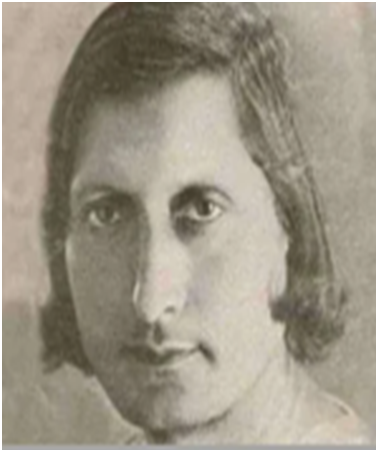
Marcus Natten is a Norwegian writer who works for New Zealand as the CEO of Hatchery Innovations LMD. He's best known for his roles in The Book Thief and The Messenger. Marcus Notton composed Adolescence. The artist has a better understanding of his lost youth in this sonnet.
5.Father to Son
- Books Name
- (English) Hornbill & Snapshot Class-11
- Publication
- PathSet Publications
- Course
- CBSE Class 11
- Subject
- English
Father to son
by Elizabeth Jennings
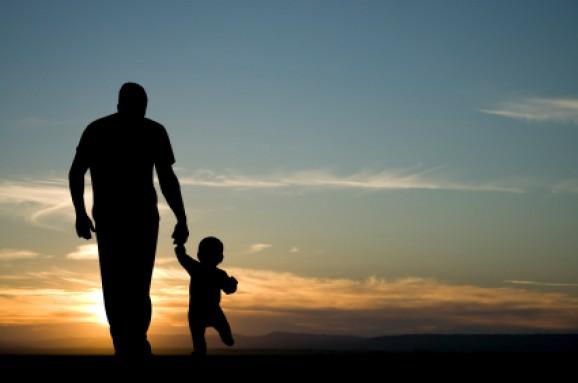
Introduction: “ Father to Son” deals with an estrange relationship, lack of understanding and an absence of a rapport between a father and his son. The father's longing for the same relationship they enjoyed during the sons childhood is very touching. Ready to forgive him, he helplessly watches the gap between the two becoming increasingly and unbridgeable.
Stanza 1
I do not understand this child
Though we have lived together now
In the same house for years. I know
Nothing of him, so try to build
Up a relationship from how
He was when small. Yet have I killed
Explanation
In the above stanza, the poet shares his feelings about his relationship with his son. He says that although they both had lived together in the same house for many years, yet he doesn’t understand him. He doesn’t know anything about his son, his likes and dislikes. He tried to build up a relationship with him from the time he was vain and small. His son has changed as he has grown up.
Stanza 2
The seed I spent or sown it where
The land is his and none of mine?
We speak like strangers, there’s no sign
Of understanding in the air.
This child is built to my design
Yet what he loves I cannot share.
Sown – do something which will bring a result
Explanation The father uses ‘I’ in the first line to acknowledge his role in the communication gap between them. He says that despite all efforts, his son was in another place that the father cannot access. They used to talk to each other like strangers and there was no sign of understanding between them. His child used to look like him and yet he didn’t know what his son loved.
Stanza 3
Silence surrounds us. I would have
Him prodigal, returning to
His father’s house, the home he knew,
Rather than see him make and move
His world. I would forgive him too,
Shaping from sorrow a new love.
Prodigal – spending money freely
Explanation There is silence between them. As a child, he was a prodigal son and now his father wanted him to return to his house, the one he knew. He didn’t want his son to move around and make his own world. He was ready to forgive him and let go of the sorrows he had inside because of him, because of the distance between them. He wanted to love him again.
Stanza 4
Father and son, we both must live
On the same globe and the same land,
He speaks: I cannot understand
!!!, why anger grows from grief.
We each put out an empty hand,
Longing for something to forgive.
Grief – sorrow, sadness
Explanation The son speaks for the first time and explains what he feels. He also feels sad about the distance between them. He shares that he is at a point where he doesn’t understand himself. His anger arises out of his sadness. It is quite clear that on both sides lies the same frustration about the gap in their relationship. They both want to forgive each other and yet they cannot find a solution to the problem. Both of them put out an empty hand for the other to seek, always in vain.
Father to Son Literary Devices
Simile – a figure of speech that makes comparison and shows similarities between two things
We speak like strangers
Alliteration – The occurrence of the same letter or sound at the beginning of closely connected words
The seed I spent or sown it where – ‘s’ sound
Silence surrounds us
Metaphor – an indirect comparison between a quality shared by two persons or things
The seed I spent or sown it where
The land is his and none of mine?
I would have
Him prodigal, returning to
His father’s house
5.Father to Son
Poem-5
Father to Son
By Elizabeth Jennings

Father to Son Poem Introduction
Elizabeth Jennings wrote the poem 'Father to Son.' The poem depicts the anguish of a father who has a strained relationship with his son. His son has grown up and is leading a full life. The father is bitter about the generation gap between them and the feeling of separation. He expresses his feelings by stating that he doesn't know much about him and that there is no sign of understanding. He wishes for their relationship to be similar to that of his son when he was a child. He is doing everything he can to solve the problem, but it is futile. As a result, they are drifting apart.
Father to Son Poem Summary
The poem is about a father's anguish as he rants about his uneasy relationship with his grown-up son. He admits that despite living in the same house for years, he doesn't understand him. He knows nothing about him, and even if he tried to build a relationship with him like he did when he was a small child, it would be futile.
He goes on to say that even though his son looks like him, he has no idea what he loves. He recognises their communication gap and lack of understanding, and they speak as strangers. His son is in a different place, which he cannot reach due to the growing gap. There is silence between them. He is willing to forgive his errant son. He wants to welcome him back to the house he has always known. He does not want his son to travel the world. He longs to be loved by him.
Finally, the son speaks up and expresses his feelings. He is at a point where he is unable to understand himself. He is saddened by the growing distance between them, and he is angry as a result of his grief and sadness. They put out an empty hand towards each other but none of them holds it. They want to forgive each other but can't come up with a solution.
Father to Son Poem Explanation
I do not understand this child
Though we have lived together now
In the same house for years. I know
Nothing of him, so try to build
Up a relationship from how
He was when small. Yet have I killed
The poet expresses his feelings about his relationship with his son in the preceding stanza. He says that despite the fact that they have both lived in the same house for many years, he does not understand him. He knows nothing about his son's likes and dislikes. From the time he was vain and small, he tried to establish a relationship with him. His son has evolved as he has grown up.
The seed I spent or sown it where
The land is his and none of mine?
We speak like strangers, there’s no sign
Of understanding in the air.
This child is built to my design
Yet what he loves I cannot share.
- Sown – do something which will bring a result
In the first line, the father uses the word 'I' to acknowledge his role in the communication gap between them. He says that despite his best efforts, his son was in another place that the father could not reach. They used to talk to each other as if they were strangers, with no sign of understanding. His son used to look like him, but he had no idea what he liked.
Silence surrounds us. I would have
Him prodigal, returning to
His father’s house, the home he knew,
Rather than see him make and move
His world. I would forgive him too,
Shaping from sorrow a new love.
- Prodigal – spending money freely
There is no word between them. As a child, he was a prodigal son and now his father wanted him to return to his house, the one he knew. He didn't want his son to be free to roam and create his own world. He was ready to forgive him and let go of the sorrows he carried within him as a result of him, as a result of the distance between them. He wanted to love him once more.
Father and son, we both must live
On the same globe and the same land,
He speaks: I cannot understand
Myself, why anger grows from grief.
We each put out an empty hand,
Longing for something to forgive.
- Grief – sorrow, sadness
For the first time, the son speaks up and expresses his feelings. He is also saddened by the distance between them. He admits that he is at a point in his life where he does not understand himself. His anger arises from his sadness. It is clear that both sides are frustrated with the gap in their relationship. They both want to forgive each other, but they can't come up with a solution. Both of them put out an empty hand for the other to seek, always in vain.
Father to Son Poem Literary Devices
1. Simile – a figure of speech that makes comparison and shows similarities between two things
We speak like strangers
2. Alliteration – The occurrence of the same letter or sound at the beginning of closely connected words
The seed I spent or sown it where – ‘s’ sound
Silence surrounds us
3. Metaphor – an indirect comparsion between a quality shared by two persons or things
The seed I spent or sown it where
The land is his and none of mine?
I would have
Him prodigal, returning to
His father’s house
About the Poet
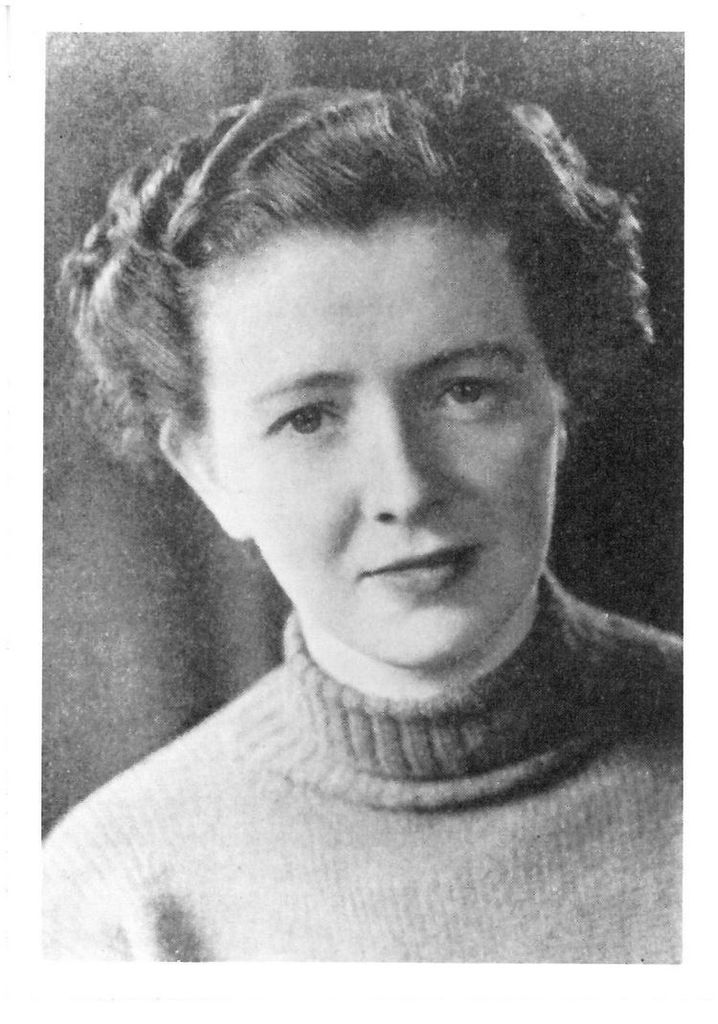

 PathSet Publications
PathSet Publications
 ACERISE INDIA
ACERISE INDIA
